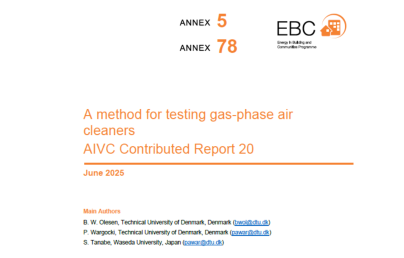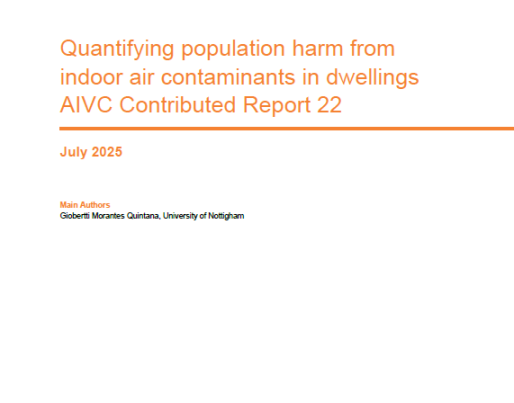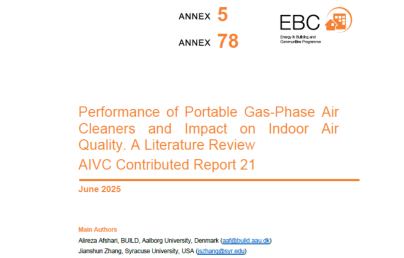
AIVC's CR22: Quantifying population harm from indoor air contaminants in dwellings

AIVC's CR22: Quantifying population harm from indoor air contaminants in dwellings
AIVC's Contributed Report 22 (CR 22) evaluates the population harm from exposure to non-pathogen airborne contaminants in dwellings.
Airborne contaminants cause significant harm to populations of people. People spend most of their time in their own homes, and so their greatest exposure is likely to occur there. Existing standards that govern acceptable Indoor Air Quality (IAQ) in residential buildings only consider a few contaminants. Exposure to them is limited using threshold mean concentrations over some period of time, but they do consider the harm they cause to populations of people.
This work aimed to evaluate the population harm from exposure to non-pathogen airborne contaminants in dwellings, and four stages of research were completed:
The first stage considered the uncertainty in the concentrations of 45 airborne contaminants in dwellings. Ethanol is the most common contaminant by mass (around 30%), and PM2.5 was the fourth most common (around 10%), but presence does not indicate harm.
Harm was evaluated using the disability adjusted life year (DALY) metric, a measure of time where a value of unity is one year of healthy life lost to some disease or injury, or death. DALYs are calculated as the sum of years of life lost to premature mortality and morbidity in a population for some health effect; this is the Burden of Disease (BoD). In the case of IAQ, the BoD is a measurement of the difference between the current health status of a population of building occupants and an ideal situation where they all live into old age, free of disease and disability associated to exposure to airborne contaminants.
2. The second stage required the development of a new metric, called a Harm Intensity, with units of DALYs per concentration per year. It links chronic harm (DALY/person/year) to the concentrations of airborne contaminants to which people are exposed to. Its values were determined using epidemiological and/or toxicological models, depending on the availability of information. The metric’s values varied by five orders of magnitude depending on the contaminant. It has utility beyond dwellings and can be used wherever people are exposed to airborne contaminants.
3. The third stage combined the concentrations and harm intensities to identify the harm caused by each of the 45 contaminants in residential dwellings. PM2.5 (67% median of all harm), PM10−2.5 (17%), formaldehyde (6%), nitrogen dioxide (6%), radon (2%), and ozone (1%) were found to be the most harmful contaminants by around an order of magnitude. From these, ASHRAE 62.2 has chosen 3 contaminants of concern that account for 83% of all harm: PM2.5, formaldehyde, and nitrogen dioxide, to add a DALY-based path into Standard 62.2 on residential ventilation and IAQ.
4. The fourth and final stage used the harm intensities to determine a relative weight of each contaminant that can be used to create a harm budget, where a harm limit is set and then any combination of contaminant concentrations that keeps the contaminant harm below that limit is allowed. Reference concentrations, taken from a reference scenario of dwellings meeting a current IAQ ventilation requirement (ANSI/ASHRAE Standard 62.2-2022) for PM2.5, formaldehyde, and nitrogen dioxide are set at 8, 20, and 6 μg/m3, respectively. Additionally, the discussion encompasses sensitivity analyses employing diverse exposure limit values to quantify harm, highlights emerging topics, and offers insights into the ventilation rate procedure.

